Charles V was ruler of both the Holy Roman Empire from 1519 and the Spanish Empire from 1516, as well as of the lands of the former Duchy of Burgundy from 1506. He stepped down from these and other positions by a series of abdications between 1554 and 1556. Take a look below for 30 more strange and interesting facts about Charles V.
1. Through inheritance, he brought together under his rule extensive territories in western, central, and southern Europe, and the Spanish viceroyalties in the Americas and Asia.
2. his domains spanned nearly 4 million square kilometers, and were the first to be described as “the empire on which the Sun never sets.”
3. Charles was the heir of three of Europe’s leading dynasties: Valois of Burgundy, Habsburg of Austria, and Trastamara of Spain.
4. As heir of the House of Burgundy, he inherited areas in the Netherlands and around the eastern border of France.
5. As a Habsburg, he inherited Austria and other land sin central Europe, and was also elected to succeed his grandfather, Maximilian I, as Holy Roman Emperor.
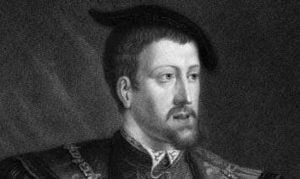
6. As a maternal grandson of the Catholic Monarchs of Spain, from the Spanish House of Trastamara, he inherited the Crown of Castile, which was developing a nascent empire in the Americas and Asia, and the Crown of Aragon, which included a Mediterranean empire extending to southern Italy.
7. Charles was the first king to rule Castile and Aragon simultaneously in his own right, as a unified Spain, and as a result he is often referred to as the first king of Spain.
8. The personal union under Charles of the Holy Roman Empire with the Spanish Empire was the closest Europe would come to a universal monarchy since the time of Charlemagne in the 9th century.
9. Because of widespread fears that his vast inheritance would lead to the realization of a universal monarchy and that he was trying to create a European hegemony, Charles was the object of hostility from many enemies.
10. His reign was dominated by war, particularly by three major simultaneous conflicts: the Habsburg-Valois Wars with France, the struggle to halt the Turkish advance into Europe, and the conflict with the German princes resulting from the Protestant Reformation.
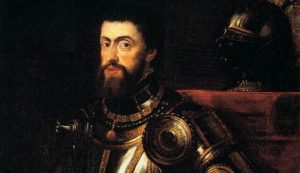
11. The French wars, mainly fought in Italy, lasted for most of his reign.
12. Charles’ French wars were extremely expensive and led to the development of the first modern professional army in Europe, the Tercios.
13. The struggle with the Ottoman Empire was fought in Hungary and the Mediterranean.
14. The Turkish advance was halted at the Siege of Vienna in 1529, and a length war of attrition, conducted on Charles’ behalf by his younger brother Ferdinand, King of Hungary and archduke of Austria, continued for the rest of Charles’ reign.
15. In the Mediterranean, although there were some successes, he was unable to prevent the Ottomans’ increasing naval dominance and the piratical activity of the Barbary corsairs.
16. Charles opposed the Reformation and in Germany, he was in conflict with Protestant nobles who were motivated by both religious and political opposition to him.
17. He couldn’t prevent the spread of Protestantism and was ultimately forced to concede the Peace of Augsburg of 1555, which divided Germany along denominational lines.
18. While Charles didn’t typically concern himself with rebellions, he was quick to put down three particularly dangerous rebellions, in the vital territories of Castile, the Frisian lands, and later in his reign in the city of Ghent.
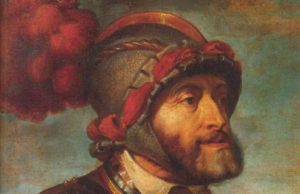
19. On the rebellions were dealt with, the essential Castilian and Burgundian territories remained mostly loyal to Charles throughout his rule.
20. Charles’ Spanish dominions were the chief source of his power and wealth, and they became increasingly important as his reign progressed.
21. In the Americas, Charles sanctioned the conquest by Castilian conquistadors of the Aztec and Inca empires.
22. Charles was only 56 when he abdicated, but after 40 years of active rule, he was physically exhausted and sought the peace of a monastery, where he died at the age of 58.
23. The Holy Roman Empire passed to his younger brother Ferdinand, archduke of Austria, while the Spanish Empire, including the possessions in the Netherlands and Italy, was inherited by Charles’ son Philip II of Spain.
24. Charles was married to his first cousin Isabella of Portugal, sister of John III of Portugal on March 10, 1526. The marriage was primarily a political arrangement, with Isabella bringing Charles a heft dowry.
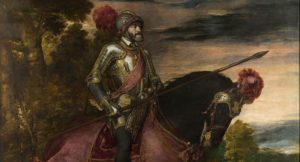
25. Isabella proved to be a loving wife and a devoted mother, in addition to being an astute politician as well.
26. Charles and Isabella had six children, though only three survived to adulthood: Philip II of Spain, Maria, and Joanna.
27. Isabella died in childbirth in 1539, from complications resulting from having borne a stillborn baby.
28. Charles was devastated following the death of his wife and grieved her loss for the rest of his life. He never remarried.
29. He had a few illegitimate children apart from the ones he had with his wife.
30. He suffered from several ailments, including an enlarged lower jaw, a hereditary disorder in the Habsburg family probably caused by the family’s long history of inbreeding. He also suffered from gout and epilepsy.

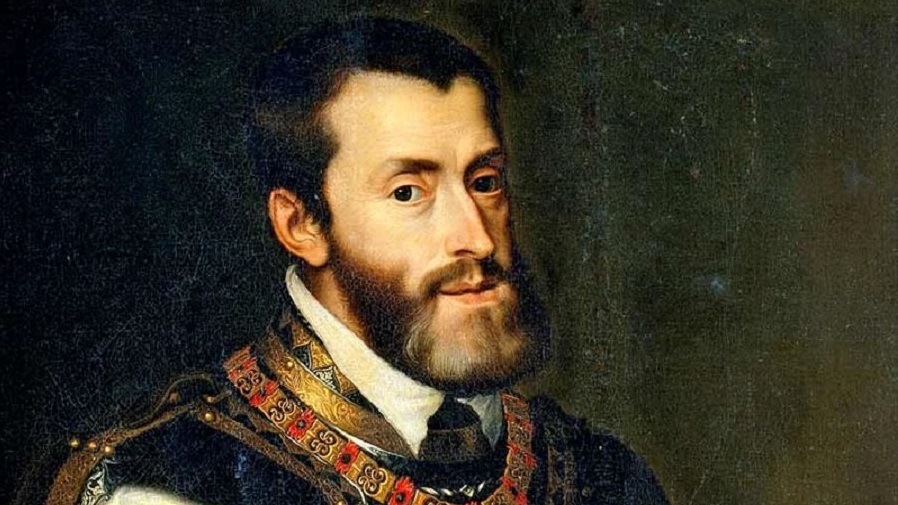



One Comment
Pingback:
July 20, 2018 at 12:12 pm